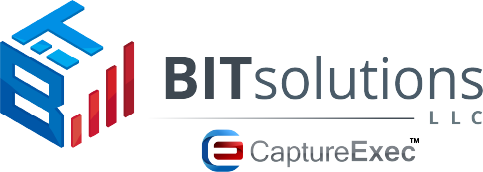It is safe to generalize that Federal agencies are inherently robust in their organizational structures, reflecting anywhere from functional (read: siloed) organizations to a more modernized matrix approach. Regardless of their respective structure, multiple business units/organizations within a single agency impact the Capture Management process. Depending on your type of organization, this can be perceived as a hindrance, or more appropriately, an opportunity. Understanding if you are a small business, resources are limited, everyone already wears multiple hats, how do you make the most of your efforts? Know the makeup of who impacts what, and strategize appropriately.
Sticking with generalizations, when looking at Federal procurements, the Government has three primary groups that can potentially impact an upcoming opportunity. Their roles and degree of impact vary, but all are important pieces of the procurement puzzle. Thus, if looking to optimize or improve your Capture Management process, your Capture Executive should be sure to communicate with these three groups:
The End User, Your Current Customer
Arguably the most important of the three, the end-user, is your potential (or, if you’re lucky, current) customer. This is whom you will be working for. They’re the recipients of the final product or service. If your company really wants to know the background, the need, and the pain points of the business problem, there is no better information source. You will need to meet with the CO or SES, and their Executive Staff, leading the organization to understand the overall expectations and budgeting available.
Then the next level is the Program Managers or Directors, these folks understand the details and specific requirements and needs of the organization. Finally, the Small Business Advocate group who can help your small business or help you find small business that can support your delivery. It is worth noting that accessibility can be tricky. Therefore your Capture Executive should utilize your small business advocates for introductions, be inquisitive and solution-oriented, not ‘sales-pitchy’, and employ the information you gather to craft your solution.
The Contracting Shop
The most recognized of the three procurement puzzle pieces is the contracting shop. This information is easy to come by. Their name(s) are spread across procurement documents, they’re listed on agency websites, they’re tied to opportunity postings, and they are, for the most part, fairly accessible. Although accessible, they follow very strict guidelines on the types of information that can be shared, and will not provide you with any information that is unique, or wouldn’t be shared with other businesses.
However, that doesn’t preclude them from being an advantageous ally. Just because the information they share with your Capture Executive is available to others in the Federal space, doesn’t mean that your competitors have thought to ask the right questions. Be strategic. Your Capture Manager should ask questions that are leading, and steer clear of those that generate easy ‘yes’ and ‘no’ responses.
Keep in mind that the questions asked may or may not be shared with others, therefore they should be framed in ways that do not divulge your strategy or position to your competitors. Your purpose is not to provide your competition with the solution you’ve crafted from the information you garnered from the end-user. You worked hard for that information, why do their work for them?
The Funding Source
Lastly, and one that most companies don’t typically address, is the funding source. Who is ‘footing the bill’ for the requested services? Does it matter? Yes, it does. Think back to your Statement of Work; chances are, one of those layers is paying for this requirement.
Their idea of what is needed (and how much it is worth) may be far different from that of the end-user, as well as the contracting shop. It is likely that information gathered from the funding source may not provide for a dynamic shift in the strategy you’re putting together, but what if it does? What if their level of interest is significant enough that it can impact the award decision? In that scenario, it is worth your effort to address them.
The Importance of Asking Questions
As the Federal marketplace tends to be busy if not saturated, it can be difficult for your Capture Managers to find an opportunity to speak with people within the government, especially members of the three critical legs that we had listed above. So if you are fortunate enough to find an opportunity, know the impact that the questions you ask can have when it comes to your being able to improve your Capture Management process.
Not only should you be sure that you are meeting with the right people, but you must be sure that you are asking the right questions. And unfortunately, if your Capture Executive is a bit green, this may be a challenge. Either allot a specific amount of time (ahead of time) for preparation and training, or be sure that your pipeline management software offers a Question/Answer capability, for these are discussions that matter.


